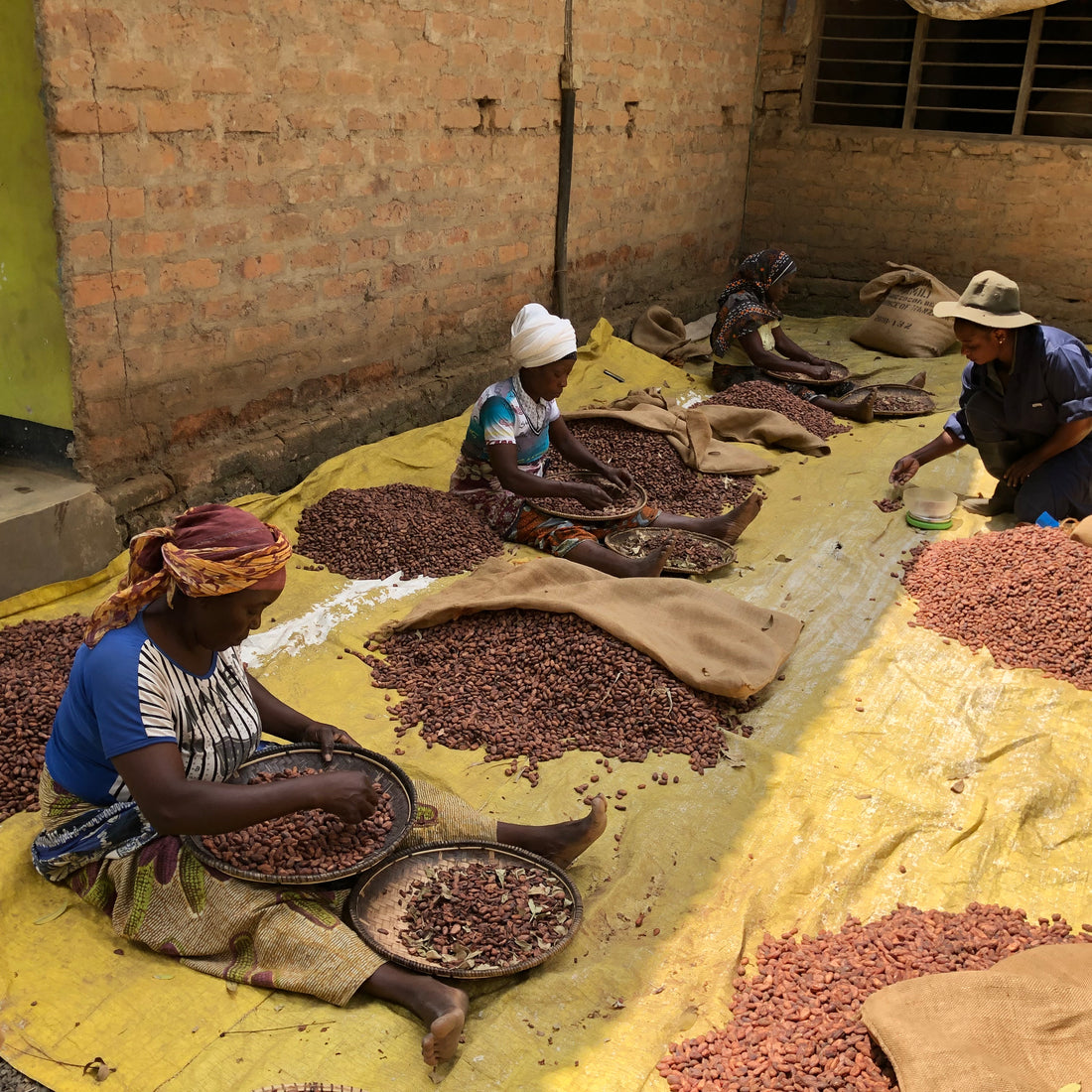
Process of Producing Cocoa Beans
Share
The bean-to-bar movement seems complicated enough with the many steps it takes to process cocoa beans into craft chocolate, but there is even more to understand around what makes a high quality cocoa bean to begin with. How does a cacao pod turn into the amazing cocoa beans we offer you here at Meridian Cacao?
First let’s start with the plant itself. Cacao is a perennial plant grown in tropical regions and has a long growing season. The cacao tree produces flowers which then turn into fruit. The fruit from the cacao tree are called cacao pods. A cacao pod contains around 40 seeds (eventually beans) that are covered in a wet, white pulp.
Pods are harvested and then “husked” and the mass of seeds are taken out from the inside of the pod to be fermented. Fermentation can be done on-farm or at a centralized fermentary. The pulp surrounding these seeds is the sugar that feeds the fermentation process, and is one of the main reasons it is important to pick cacao pods at the correct stage of ripeness. In an unripe cacao pod the pulp has not developed enough sugar for fermentation to occur properly, and in an over-ripe pod the pulp deteriorates into diluted, watery sugars insufficient for fermentation.
“Wet” (meaning fresh) cacao seeds are heaped into piles or into wooden boxes to ferment and are often covered with banana leaves to help microorganisms start the fermentation process. Some specialized fermentaries have experimented with their own strains to further inoculate fermenting piles in order to influence flavor profiles. Piles are then turned to properly aerate the microorganisms at work until the process is finished, about a week later. Color changes are a result of good fermentation, where the color of the fermenting seed changes from a dark purple to a dark brown.
Fermentation is not always done well, or even much at all, when seeds are heading downstream to become cocoa beans for mass-produced chocolate. It is the mastery of this step along the way that is key to differentiating the good cocoa beans from the bad, in terms of their potential for good quality and flavor, pre-chocolate.
Next in the process, fermented piles are spread out to dry, either in the sun or with machine driers. It is best to dry them slowly so as not to trap the release of acetic acid, which can taint flavors. Drying too fast closes the membrane surrounding the seed allowing only the release of water, concentrating acids in the finished bean. Cocoa beans should be dried to about 7% moisture content and are then ready for sorting and bagging.
After cacao seeds are fermented and dried into cocoa beans, the beans are graded, usually by government entities of each country where they are grown, into either “bulk” or “fine flavor” categories to distinguish cocoa beans meant for mass-production and those with the capacity for a full flavor profile. This designation, in large part, comes as a result of fermentation techniques.
All the cocoa beans we offer at Meridian are “fine flavor” beans produced with superior fermentation techniques. They are all meant to be representative of the potential flavors inherent to a flavor map of a single country of origin, which is why we classify them by country and by estate. Single origin cocoa beans are what make single origin chocolate so unique. Check out this great link by Megan Giller for more information about single origin chocolate: http://www.storey.com/article/what-is-single-origin-chocolate/
Resources:
http://equalexchange.coop/products/chocolate/steps
http://www.dandelionchocolate.com/process/#anchor
https://www.dandelionchocolate.com/2017/04/28/education-station-is-that-cacao-pod-ripe/
